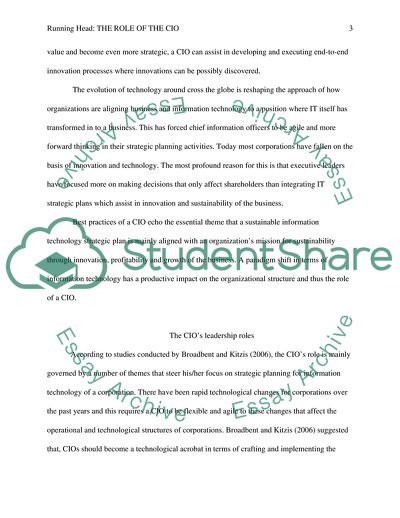Cite this document
(The Role of the Chief Information Officer Term Paper Example | Topics and Well Written Essays - 2750 words, n.d.)
The Role of the Chief Information Officer Term Paper Example | Topics and Well Written Essays - 2750 words. https://studentshare.org/information-technology/1815231-the-role-of-the-cio-in-effective-information-technology-strategic-planning-through-corporate-governance
The Role of the Chief Information Officer Term Paper Example | Topics and Well Written Essays - 2750 words. https://studentshare.org/information-technology/1815231-the-role-of-the-cio-in-effective-information-technology-strategic-planning-through-corporate-governance
(The Role of the Chief Information Officer Term Paper Example | Topics and Well Written Essays - 2750 Words)
The Role of the Chief Information Officer Term Paper Example | Topics and Well Written Essays - 2750 Words. https://studentshare.org/information-technology/1815231-the-role-of-the-cio-in-effective-information-technology-strategic-planning-through-corporate-governance.
The Role of the Chief Information Officer Term Paper Example | Topics and Well Written Essays - 2750 Words. https://studentshare.org/information-technology/1815231-the-role-of-the-cio-in-effective-information-technology-strategic-planning-through-corporate-governance.
“The Role of the Chief Information Officer Term Paper Example | Topics and Well Written Essays - 2750 Words”. https://studentshare.org/information-technology/1815231-the-role-of-the-cio-in-effective-information-technology-strategic-planning-through-corporate-governance.


